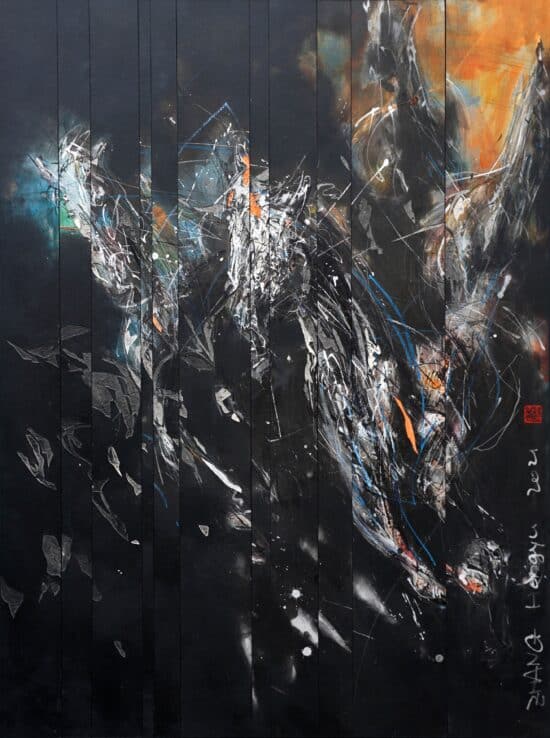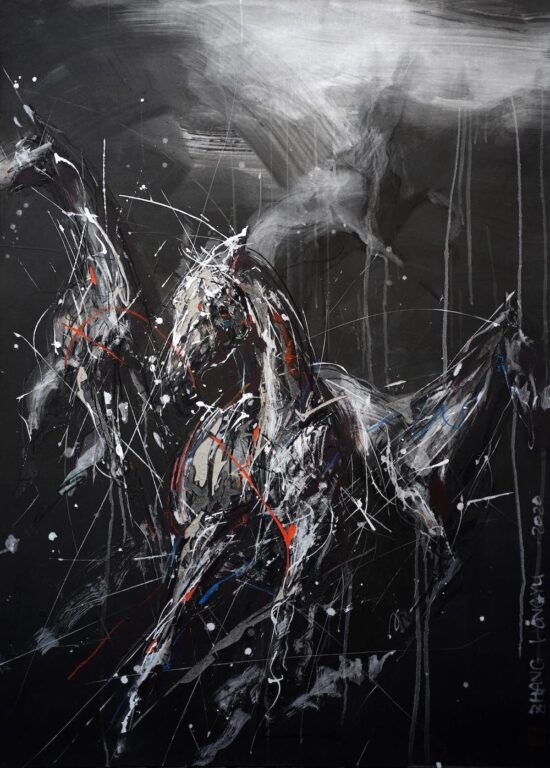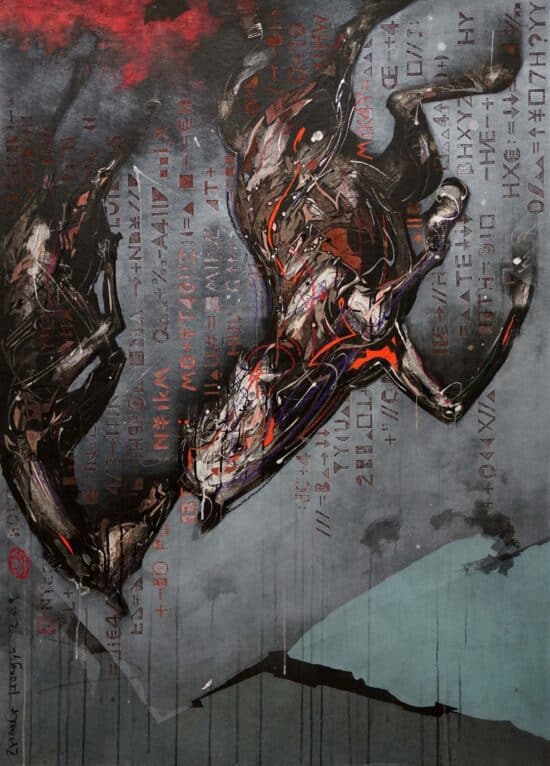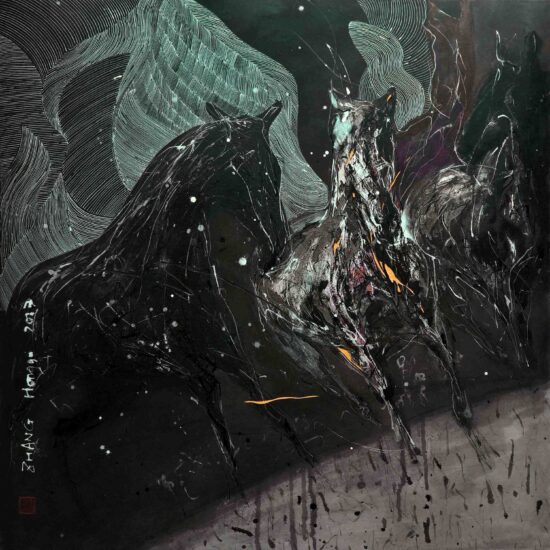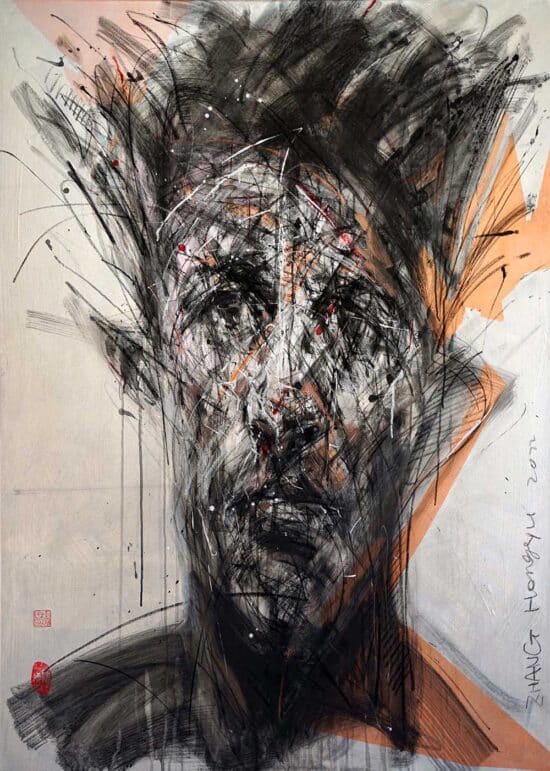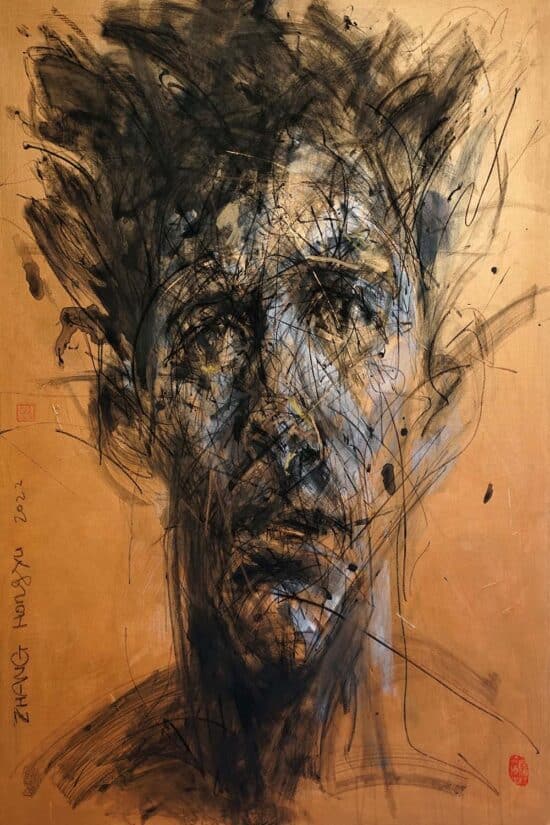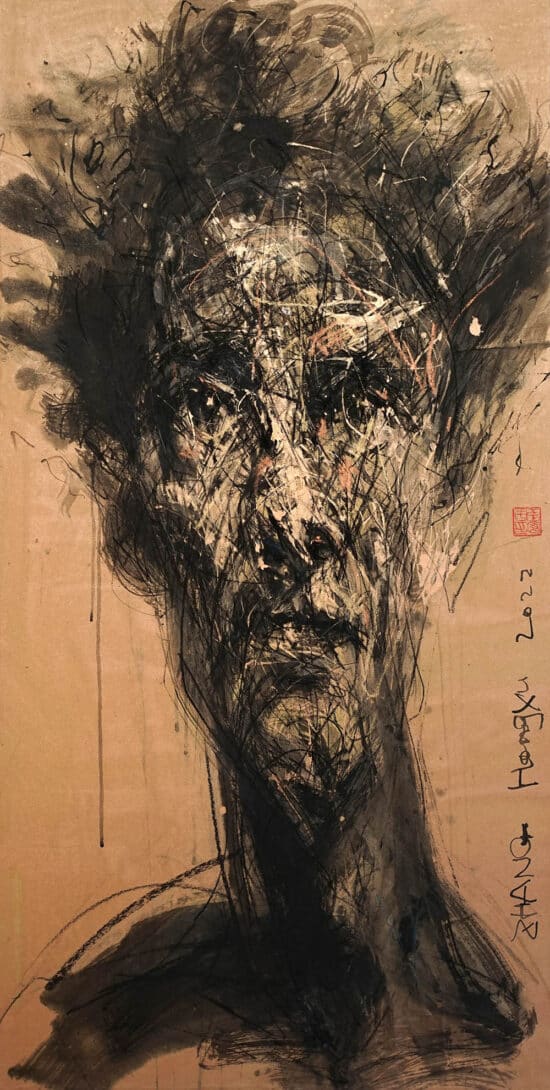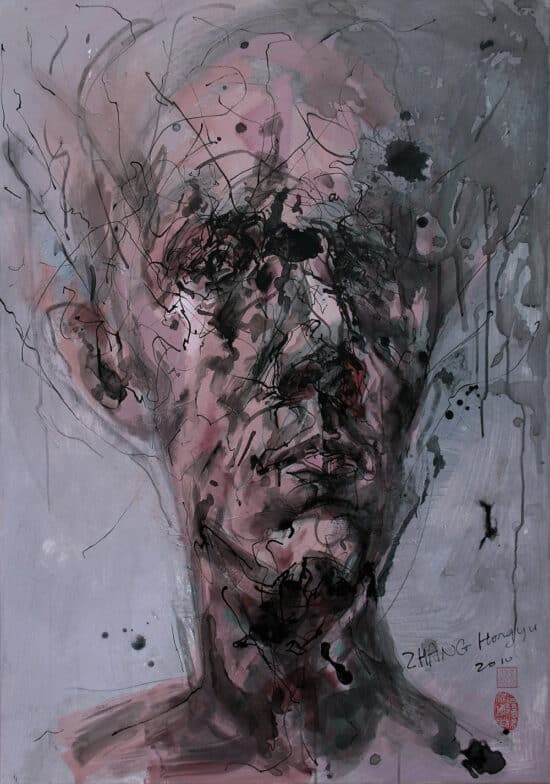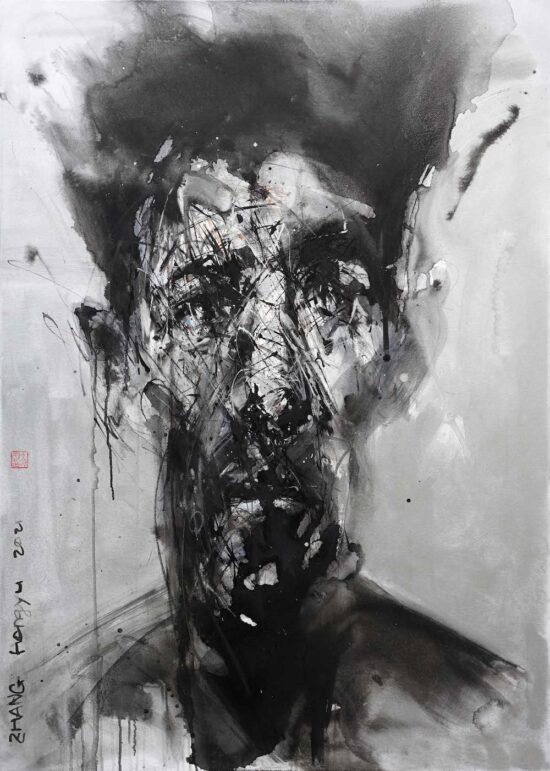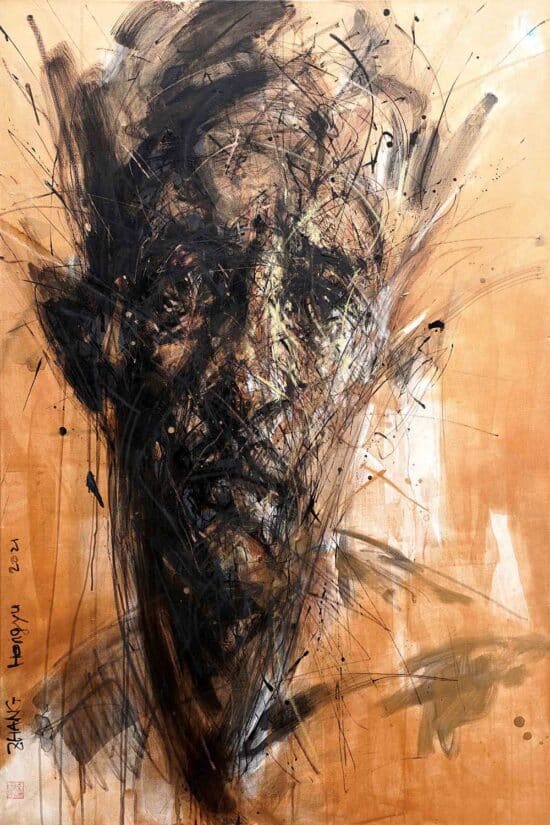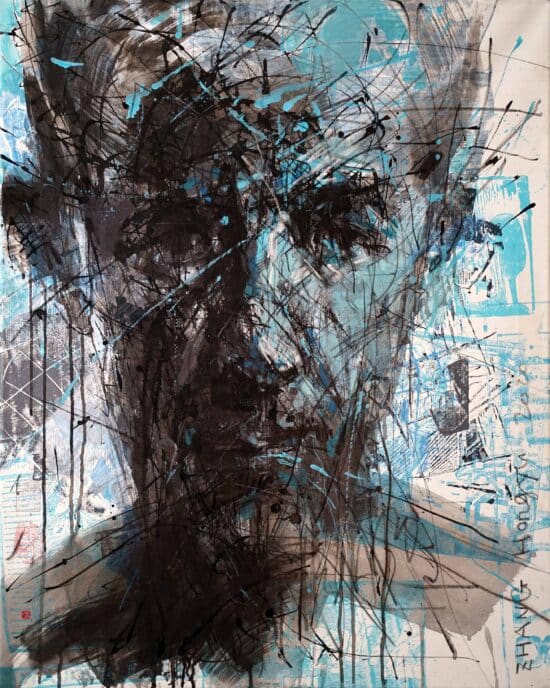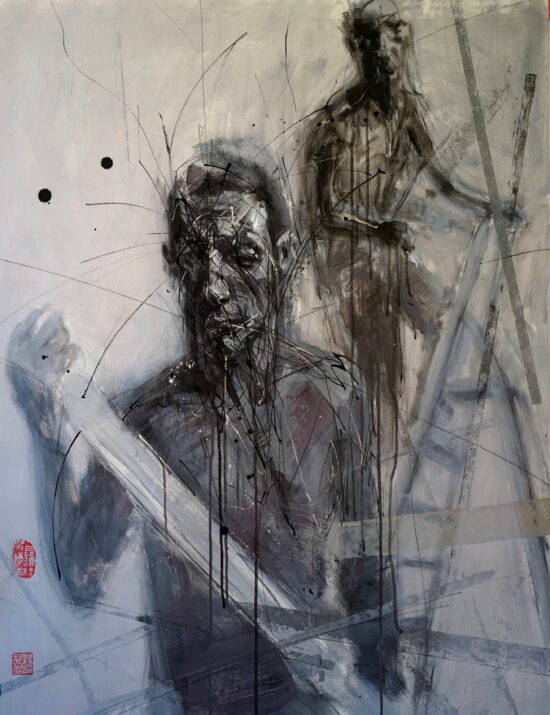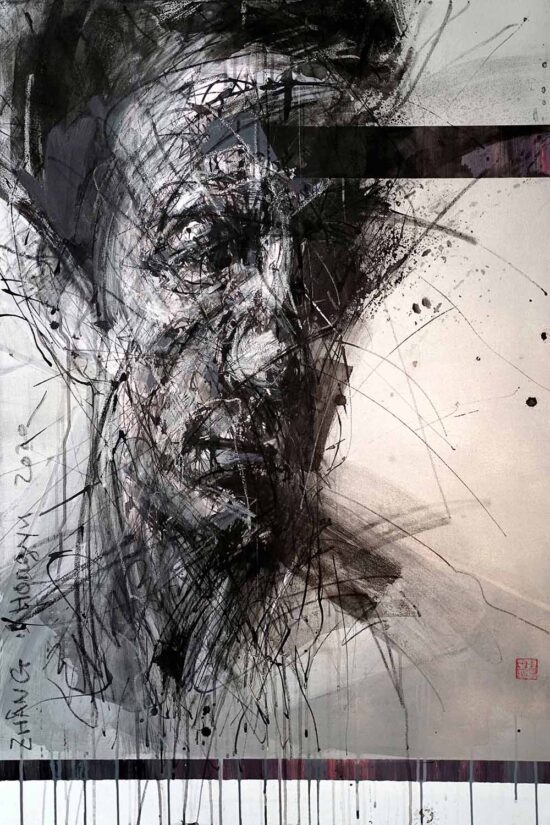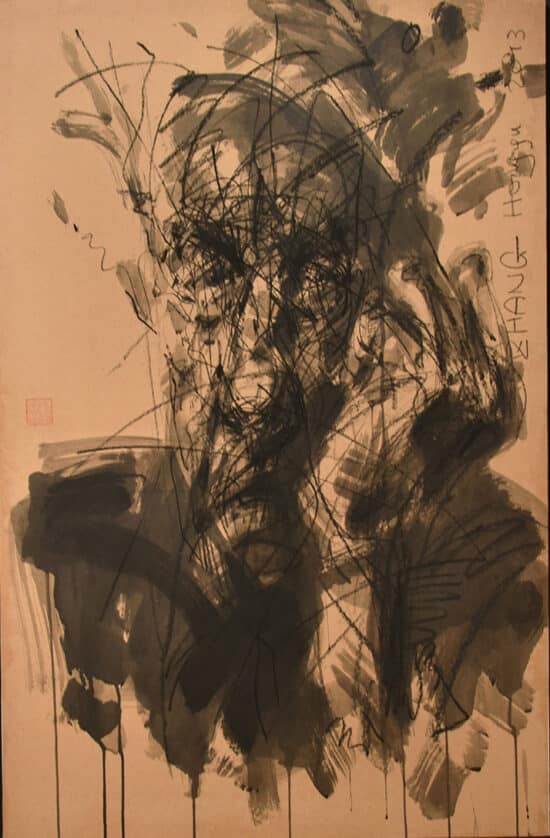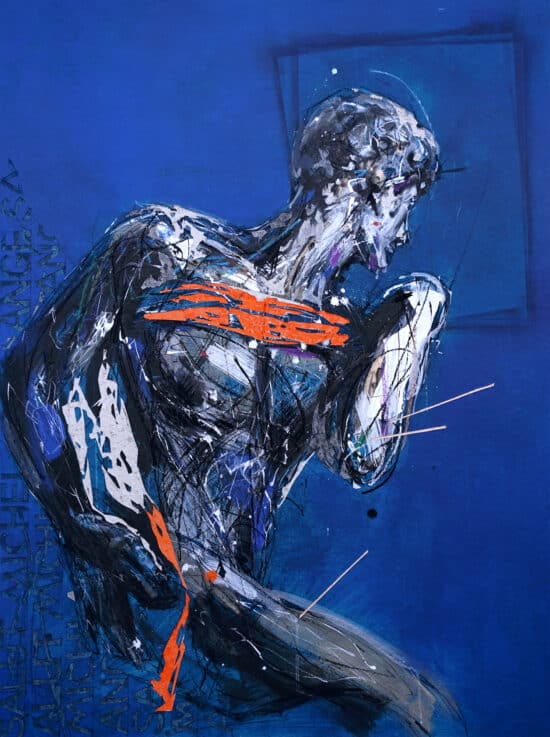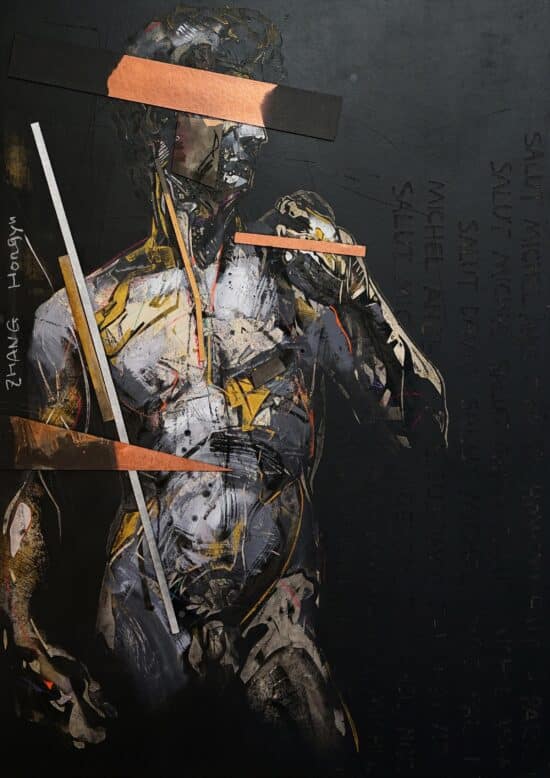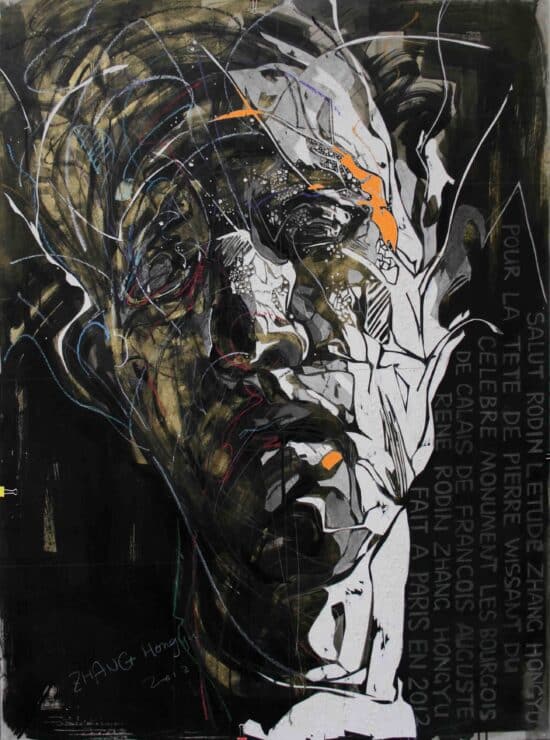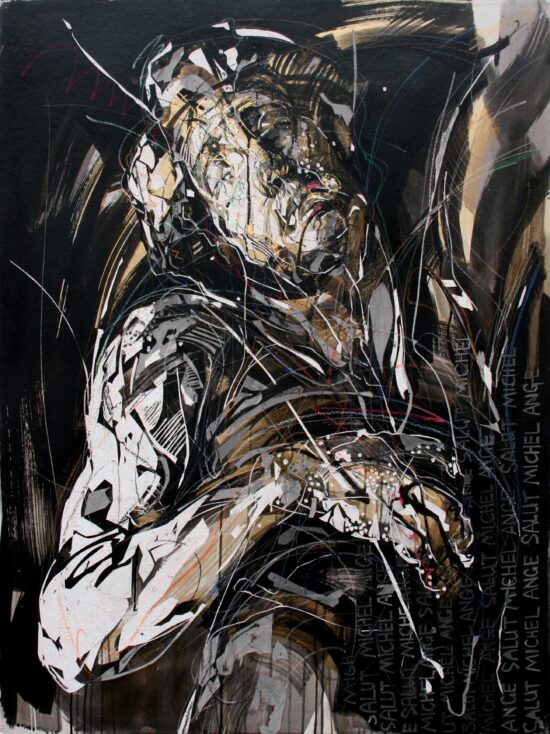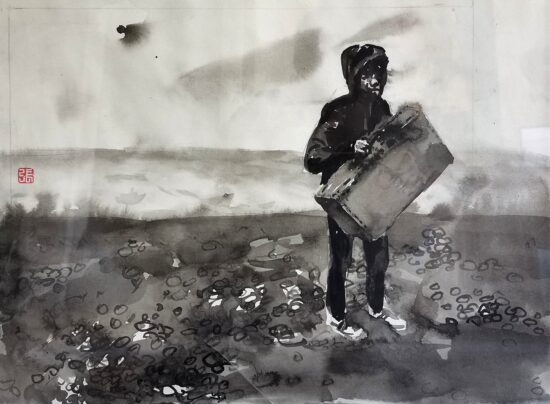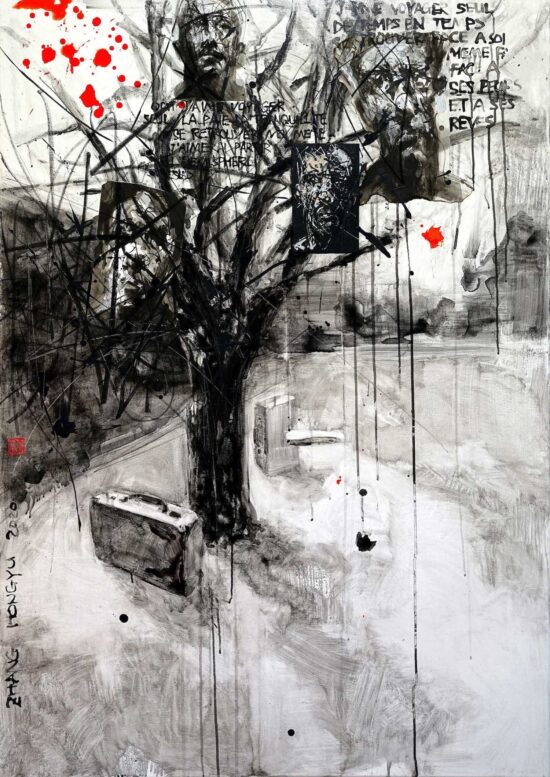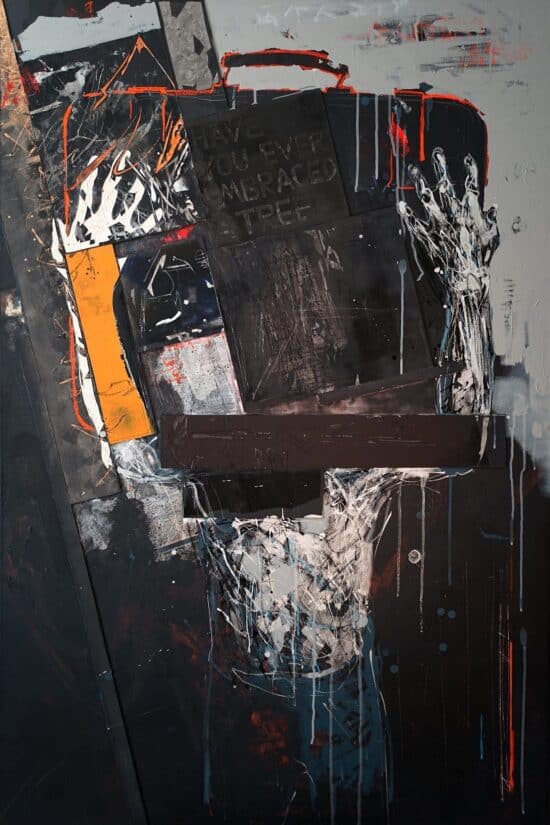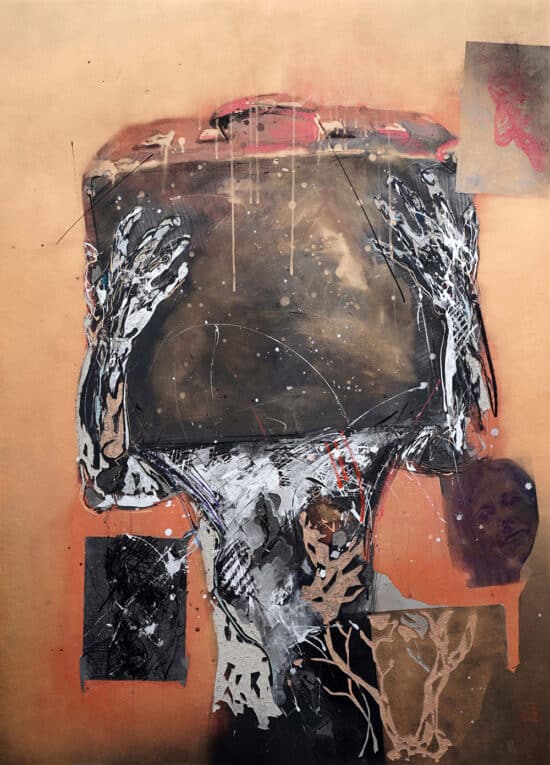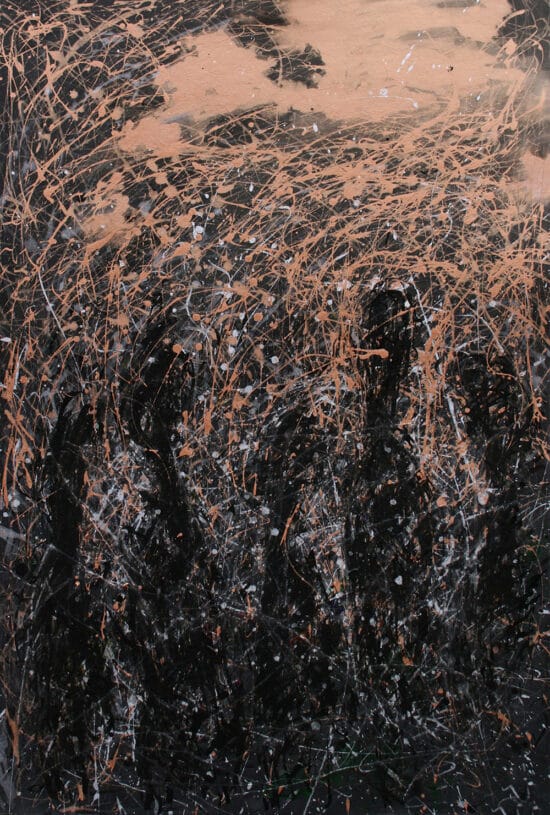Nocturnal Melody
Human landscape
Tribute to the Masters
Interior journey
Others
Biography
Hongyu Zhang is a chinese painter who lives and works in Paris.
He was born on the huge plains of Mongolia, China. From an early age, his uncle (teacher at the School of Fine Arts), coaches him in calligraphy and traditional Chinese painting. This is when he decided on an artistic career. He graduated in 2004 from Mongolia’s School of Fine Arts, specializing in engraving. After his schooling he decides to discover other cultures and heads for Paris. Once graduated from the Versailles School of Fine Arts, he is more determined than ever to become an independent artist. Initially his style is abstract and colorful.
The death of his mother in 2006 will be a turning point both personally and professionally. His emotions and his thoughts were shaken. He then took a new look on the meaning of life, the importance of art and the direction that his art should take. The absence of his mother allowed him to discover a depth in himself that he was unaware of. His style changed: colours disappear, black and white prevail and subtle shades of grey invade his palette. He often uses Indian ink, very common in the East for writing and traditional painting.
This technique is part of the oldest and richest artistic heritage in the human history. Hongyu ZHANG fuses techniques from his ancestors with acrylic, oils and pastels from the West. He works on different mediums placed directly on the floor. The expression, however, is truly from western inspiration, and the influence of engraving is obvious in his paintings.
The stroke determines the style. Each stroke has its own existence and symbolizes strength. All the lines together build the energetic space. The artist creates his works to music. The chosen music determines the painter’s drawing, making it run and dance on the canvas. Conveying movement, rhythm and energy has become a priority for ZHANG. The subject of the painting itself is less important. If Zhang chooses portrait, it’s because he thinks the human face can be a reflection of myriad information.
Through the model’s personality, experience and emotion, he creates what he calls “the human landscape”, with its imagination and its screams. The spectator therefore has to endeavour to forget the model to enter a deeper level of abstraction. Expressionism was the reason for ZHANG’s trip to Europe. He is fascinated by Kafka’s work and expressionist cinema. He admires Edward Munch, Egon Schiele and Chaïm Soutine. Like them, ZHANG’s objective is unshakeable: to show the human being at the climax of its psychological state.
The painter enters a new period: with the series “Salut aux Maîtres” he attempts to pay homage to culture through the centuries while expressing himself artistically.
CV
Education
- 2016 – 2017 : Residency, Maison d’Art Contemporain, Assilah, Morocco
- 2008-2009: Workshop of the Cité Internationale des Arts of Paris
- 2004-2008: Versailles School of Fine Arts, visual arts section
- 2003-2004: Beijing Language and Culture University
- 1999-2003 : Inner Mongolia’s School of Fine Arts, specialized in engraving
Exhibitions
- 2023 : “DDessin Paris” art fair, presented by Post-Flamand Art Space, Paris (France)
- 2022 : The Way, Solo exhibition, Untitled Space, Prague, Czech Republic
- 2022 : Atelier Gustave, Solo show “Voyage visage”, Paris
- 2022 : “Aventures Nomades”, LooLooLoo Gallery , Paris
- 2022 : “Voyage Dans l’Espace Temps”, Group show, Huawei Flagship Store, Paris
- 2021 : Grand E’terna Gallery – ” Abstraction et Figuration”, Paris, France
- 2019 : “Voyage Intérieur”, Cultural Centre Max Juclier, Villeneuve-la-Garenne
- 2018 : “YIA Art Fair” P/CAS – Paris contemporary show, Carreau du Temple, Paris
- 2018 : Salon MacParis
- 2017 : Atelier V, Paris
- 2016 : Espace de la Calende, Rouen
- 2016 : “Noblesse sauvage”, solo exhibition, Centre Culturel de Chine, Paris
- 2016 : 49th Salon des Arts, Alfortville
- 2015 : Carré des Coignard, Nogent-sur-Marne
- 2015 : Atelier V, Paris
- 2014 : YI Museum, Shangai – “West to Est”
- 2014 : Espace Christiane Peugeot, Paris – “Laureates of Peugeot”
- 2013 : Galerie Besseiche, Saint-Tropez – “Homage to Masters”
- 2012 : Palac Krizic, Smichov-Prague – “Shades and Clouds”
- 2012 : Atelier V, Paris – “Expression”
- 2012 : Centre Culturel Aragon-Triolet, Orly – “Laureate of Mai des Créateurs”
- 2012 : Etoile Saint-Honoré, Paris, – “Laureate of Fondation Charles Oulmont”
- 2010 : Galerie Salon des Arts, Nantes – “Trait Pour Trait”
- 2009 : Galerie en RE, Pont-l’Abbé
- 2009 : Guanlan Museum, Shenzhen – Guanlan International Biennale
- 2009 : Maison Saint-Vincent, Villepreux – Guest of honor of Salon de GAP
- 2008 : Galerie l’Angolo di Umberto, Bolzano – “Cantadioptre”
- 2008 : Cité Internationale des Arts, Paris – “Travels”
- 2008 : Mairie de Saint-Victor – Salon du Val de Cher
- 2008 : Galerie Eric Lhoste, Pau – “Zhang Hongyu”
- 2007 : Salon d’Automne, Paris
- 2003 : Inner Mongolia’s School of Fine Arts – “Rule, Space, State”
- 2002 : National Exhibition, Mongolian Art Museum – “Silence”
Awards & Residencies
- 2014 : Prize of the 22nd Salon d’Art Contemporain
- 2011 : Prize for painting of the 22nd Mai des Créateurs
- 2010 : Charles Oulmont Prize by Fondation de France
- 2009 : Jean-Vincent DARASSE Prize by Fondation Taylor
- 2008 : Gold medal and the Departmental Council’s Prize
Articles
Calligraphy and contemporary art: Hongyu Zhang (3/3)
Three of the gallery's artists derive their pictorial and/or philosophical resources from calligraphy. In this series of 3 articles we have asked...
Introducing Hongyu Zhang
Hongyu Zhang’s painting takes root in calligraphy and traditional Chinese painting. Each stroke of paint composing his portraits has its own...



